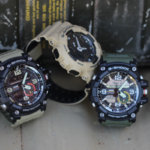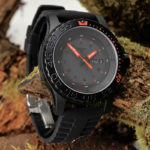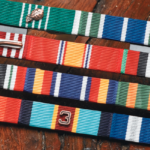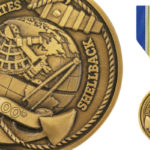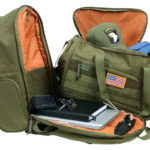Like many Americans, you probably have several black and white images burned into your memory of your grandparents donning standard-issue World War II, Korean War, or Vietnam War uniforms or posing before tanks and airplanes at the height of their service. You might even have a box of precious old military medals or some stained, dog-eared documents that seem too important to have ever been thrown away. Most families with a military history cherish these historical relics and pass them from one generation to the next.

The reason we cherish our family’s military memories is complex, but one main factor is that, for our grandparents and great-grandparents, military relics paint a broader familial picture when there may be few other clues to interpret. Your great great-grandfather may have never even had his photo taken before he posed in front of the camera during boot camp, and if it weren’t for his military records, you might not know basic biographical information about him, like his birthday or where he was born.
There’s a more sentimental side, too. Indeed, anything that’s several generations deep is going to have an inherent importance to family historians. If it was special enough that your parents, their parents, and maybe even their parents held onto it for so many years, you know that it must be something worth preserving. Like all history, your family’s military story is one worth telling for the simple fact that, if it’s left untold, no one will ever hear it.
Doing the Research and Finding the Relics
So where do you look to uncover your family’s unique military history? A parent’s or grandparent’s attic is often ground zero for old-school military mementos, but if that’s already been exhausted, turn to the National Archives. There, you’ll find service records, pay vouchers, pension payment records, bounty land records, and more archival docs that can give you the scoop on the history of a specific family member who served in the Armed Forces. Many modern-day family historians also turn to genealogy services like Ancestry to uncover key info.
What about old military medals and ribbons? Fires, natural disasters, moves…all of these things are to blame for wiping out the important awards and medals earned by your ancestors. But fear not! The National Archives has records of military awards and decorations earned by many service members. This is great news for historians and family members who want to preserve (and display) the accomplishments of their family members. You can then order replacement medals, which you can proudly display for the next several generations to enjoy.
Putting History on Display: Preservation Ideas
Now that you’ve got the subject matter—the photos, documents, and awards—it’s time to think about how you’re going to preserve it so your great-grandchildren don’t have to go through the process all over again.
- Digitizing Anything and Everything—Before you do anything, digitize. The reason for this is simple: Digital files act as backups that cannot be destroyed in fires, floods, or hurricanes. Scan all documents and upload them to a cloud-based storage system (such as Dropbox or Google Drive) so they don’t get lost or destroyed. Sure, digital photos and scanned documents aren’t the same as the real thing, but they are vital to preserving family history when hard copies disintegrate over time.
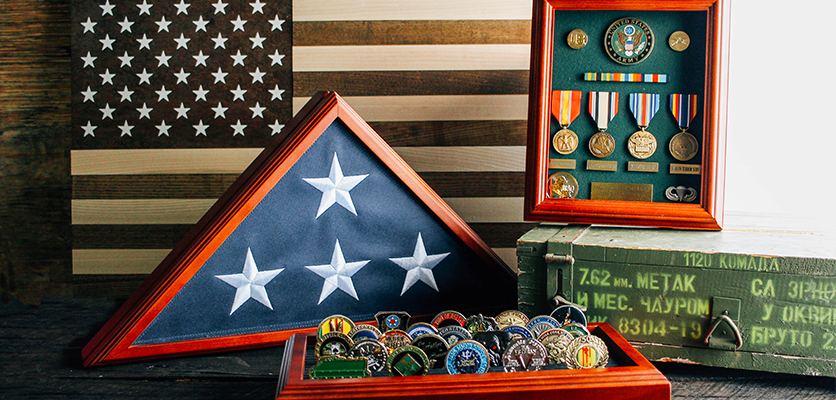
- Keeping Decorations Safe and Displayed—Sadly, you can’t digitize your family member’s heirloom medals and awards. But you can store them in a military shadow box that simultaneously displays them and preserves them against dirt, dust, and fingerprints. These displays are absolutely perfect for keeping all of your physical military objects organized and help tell the unique story of your relative’s accomplishments and military service.
- Framing Heirloom Military Photos—One of the most delightful ways to save your military mementos is with framing. Go to your local frame shop and ask to see examples of unique objects they have framed. From bomber jackets to retired flags to particularly well-worn photographs, you’ll be surprised to discover all the many unique ways you can frame your special objects. Always spring for the archival glass (sometimes trademarked as Museum Glass) that protects against harmful UV rays.
- Archiving and Preserving Delicate Documents—Another important preservation aspect for the family historian is learning how to archive old and delicate documents in their physical form. Those loose papers and photos that have been stuffed in miscellaneous books and folders should be transferred somewhere safe, such as into archival photo albums or boxes. It should go without saying, but never use any tape, glue or pins when preserving old documents and photos.
- Creating a Written Record—Your job as the family historian is not only to collect and preserve the archives, but also to piece together the facts so that future generations don’t have to do much interpreting. Do your best to use the resources you have available to create a written history, complete with timelines and narratives of what you uncover. Print it out and place it with all your documents (and, of course, create a digital copy that can’t be destroyed) to give each item prominence and help future generations understand their family history.

Ensuring That Memories Are Maintained
You might remember being a kid and having your parent or grandparent show you these special relics and explain to you why they were so important. You’ve certainly done your part by preserving them for future generations, but you also have to instill their importance in your kids, grandkids, nieces and nephews so they themselves will help maintain them as part of the family history for centuries into the future. With these strategies, you can be sure your family history won’t be lost, even among generations to come.
